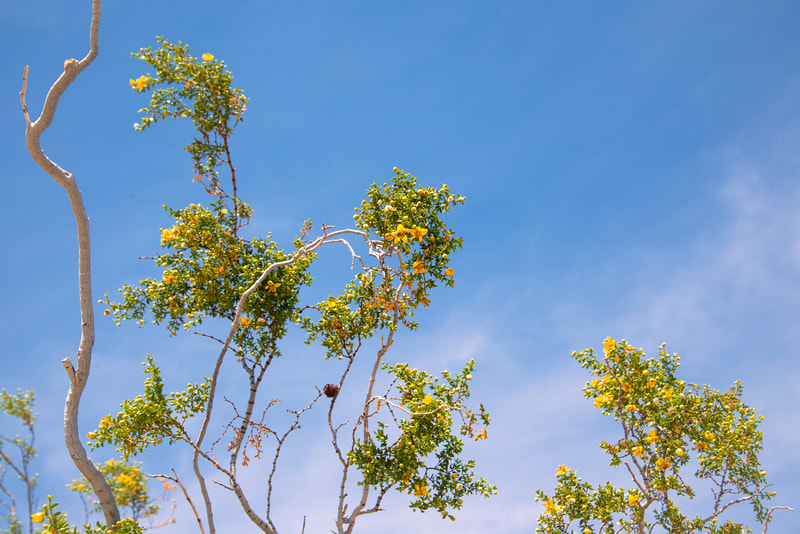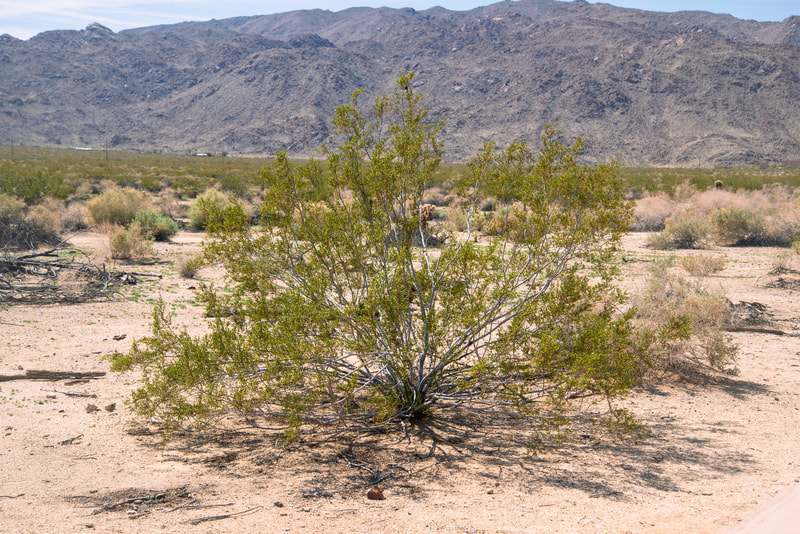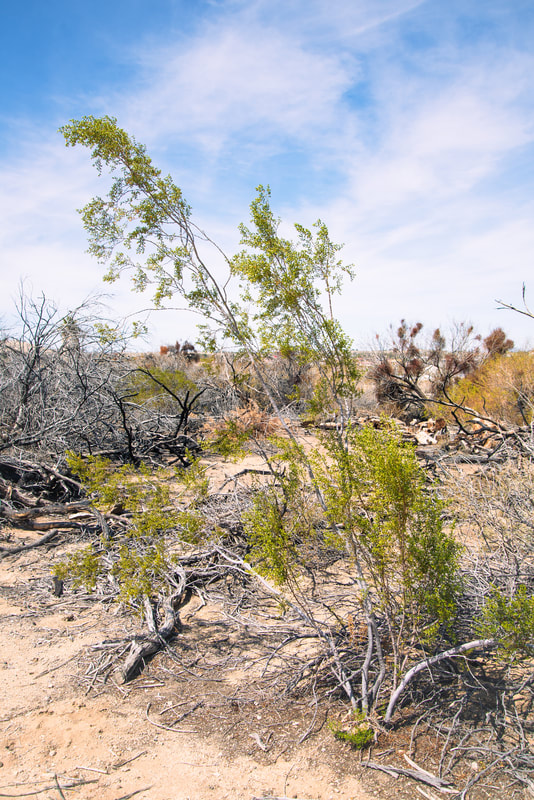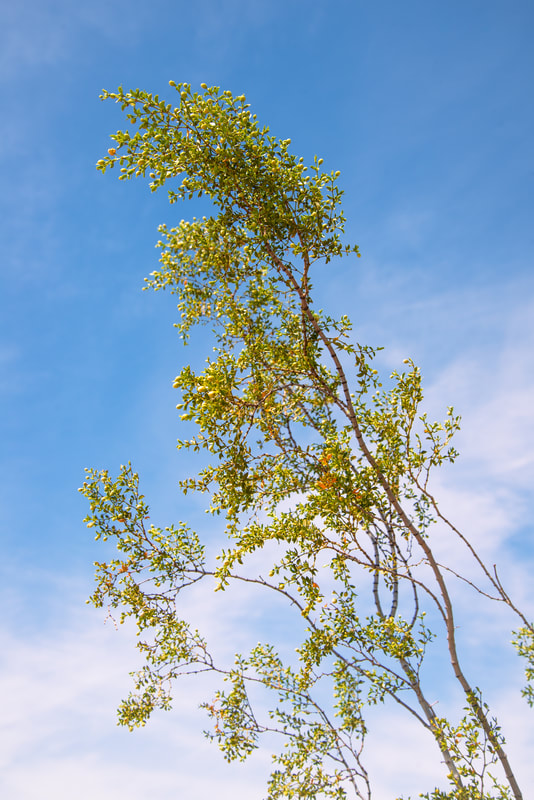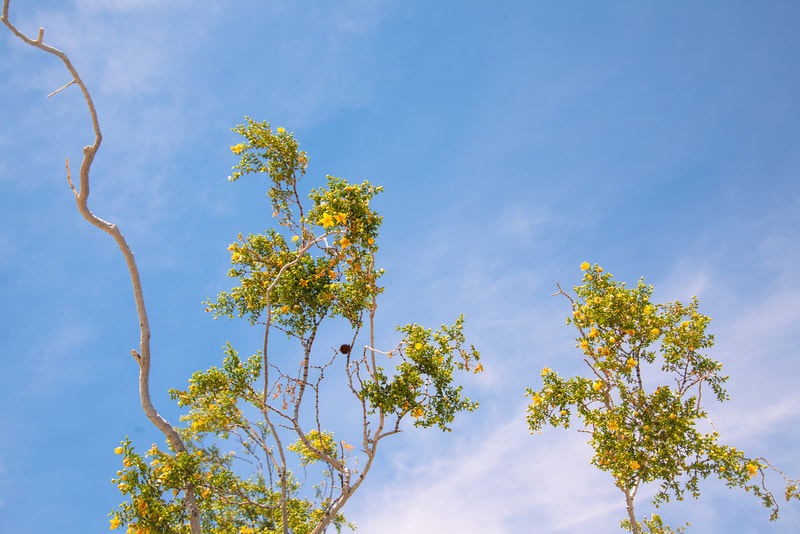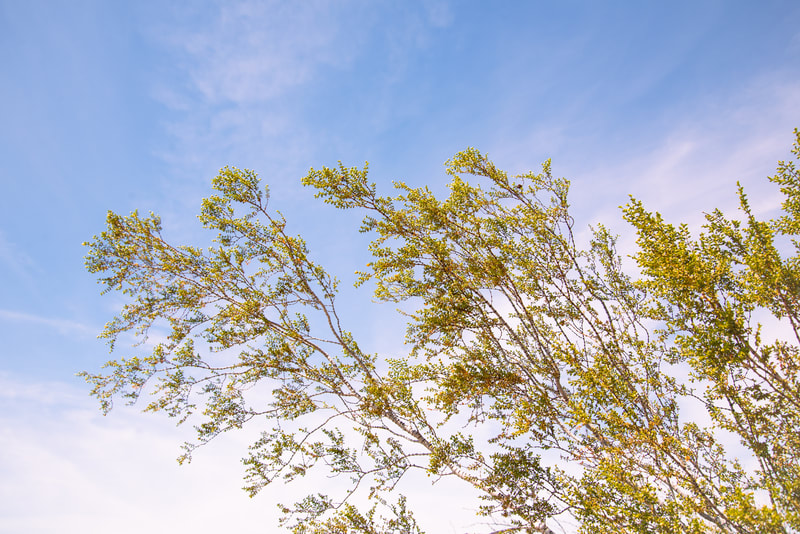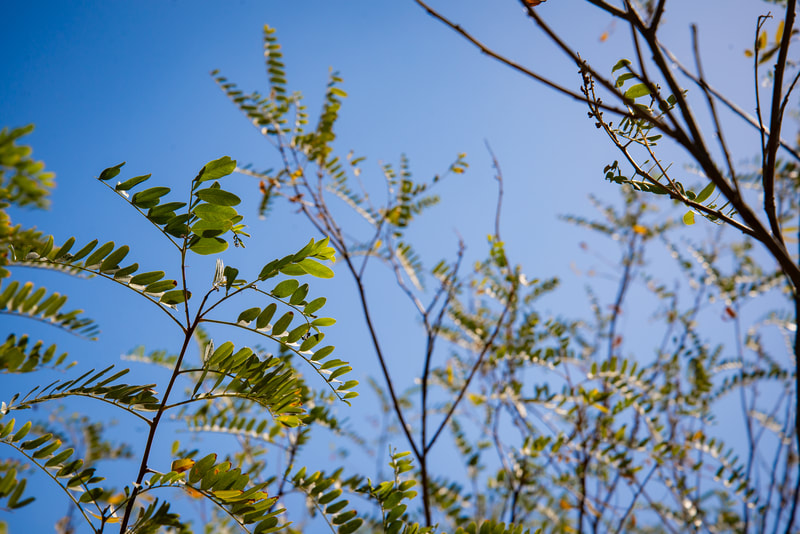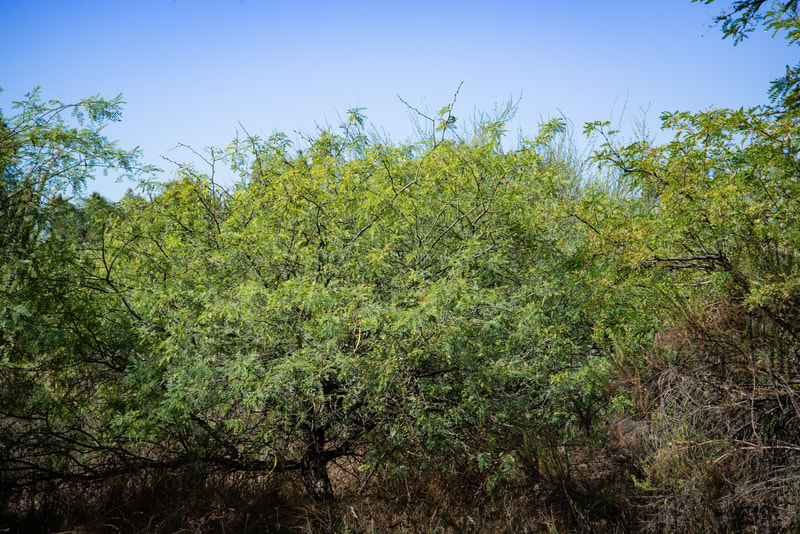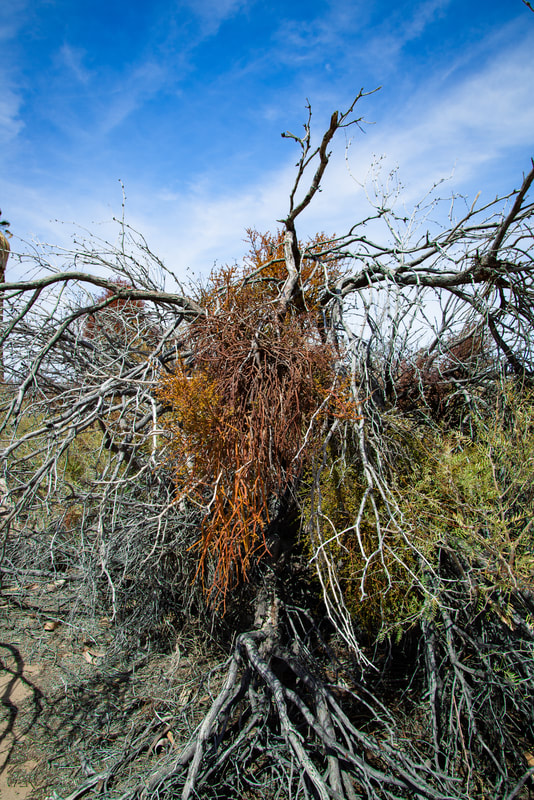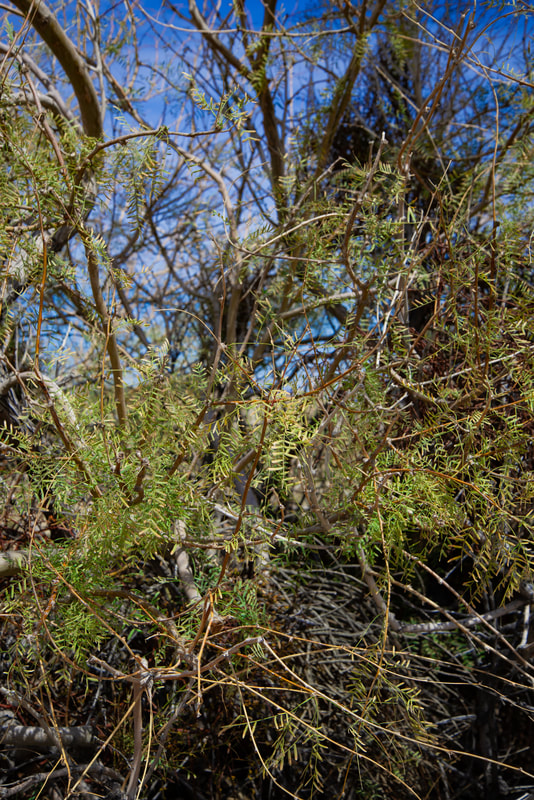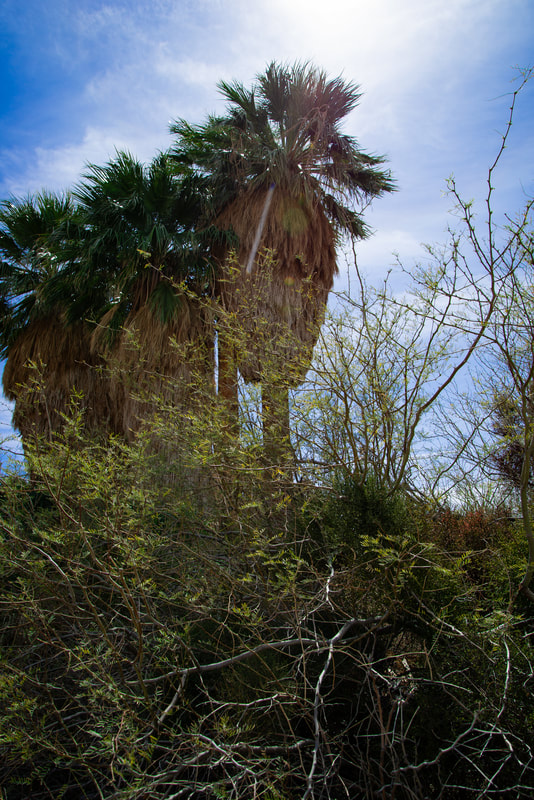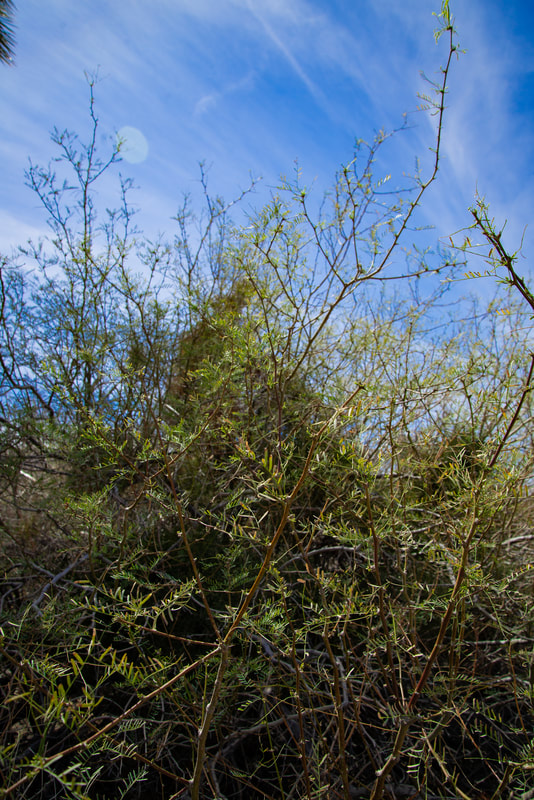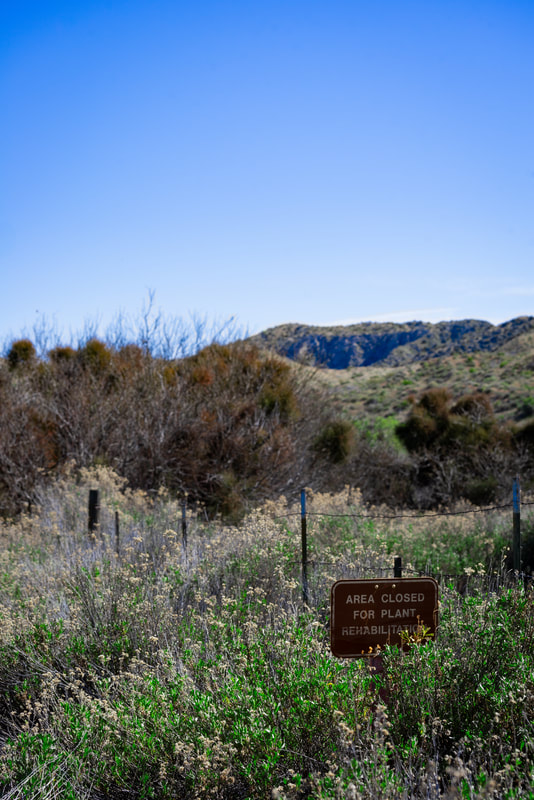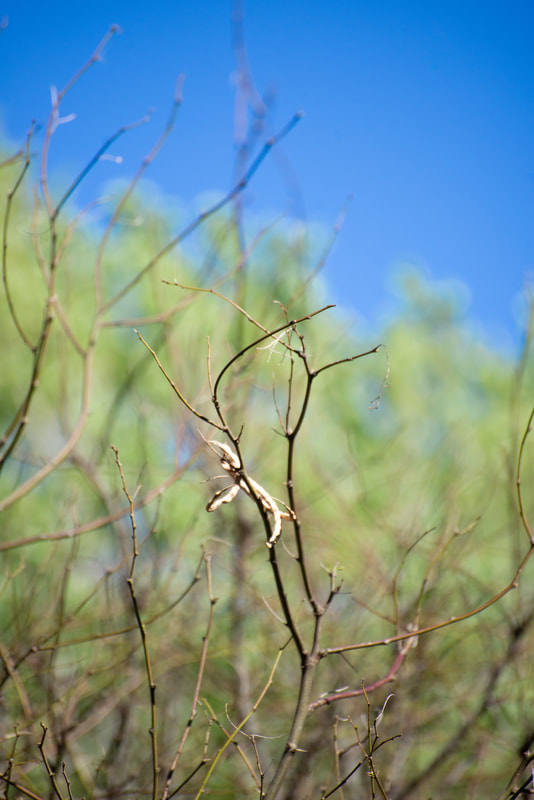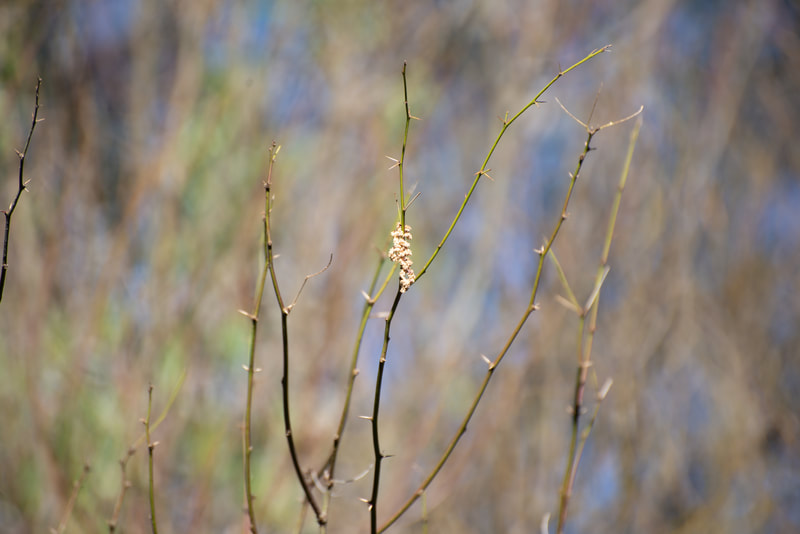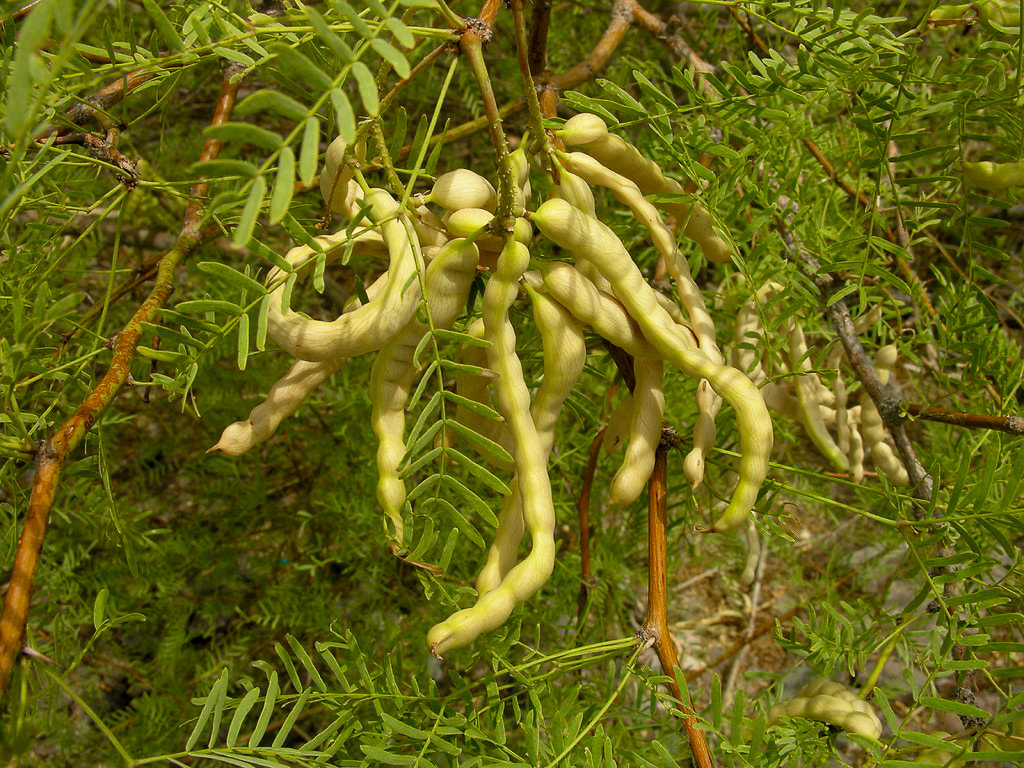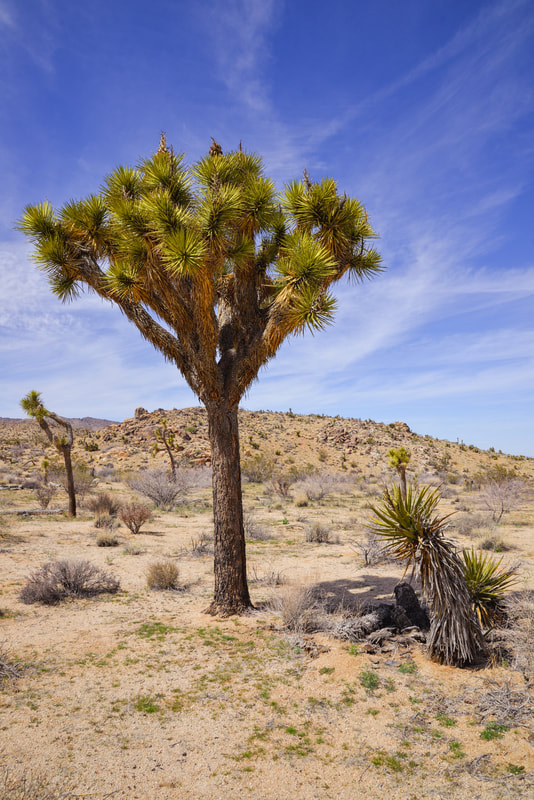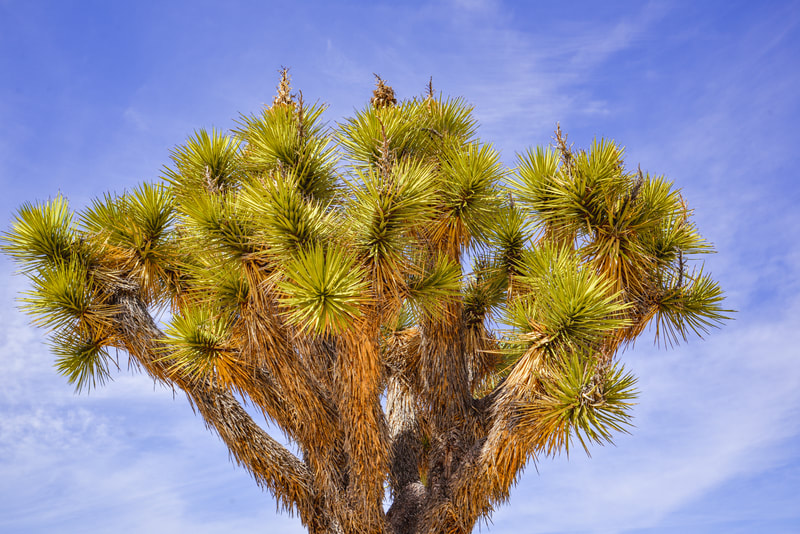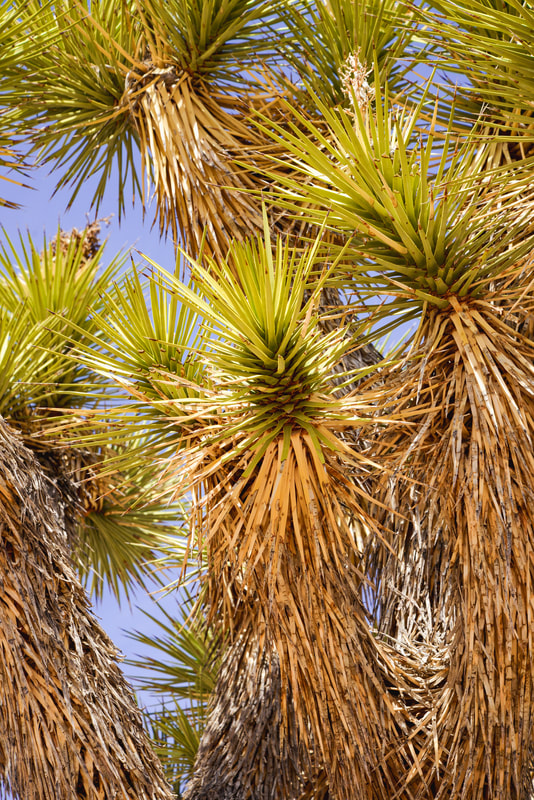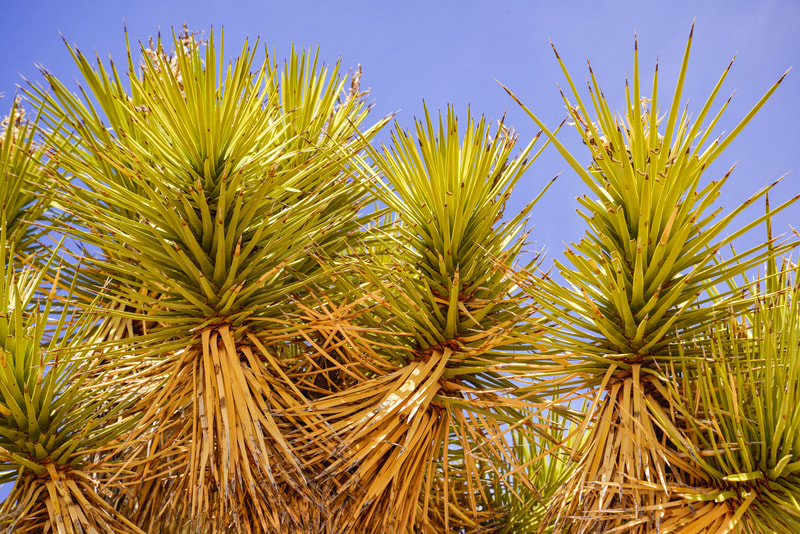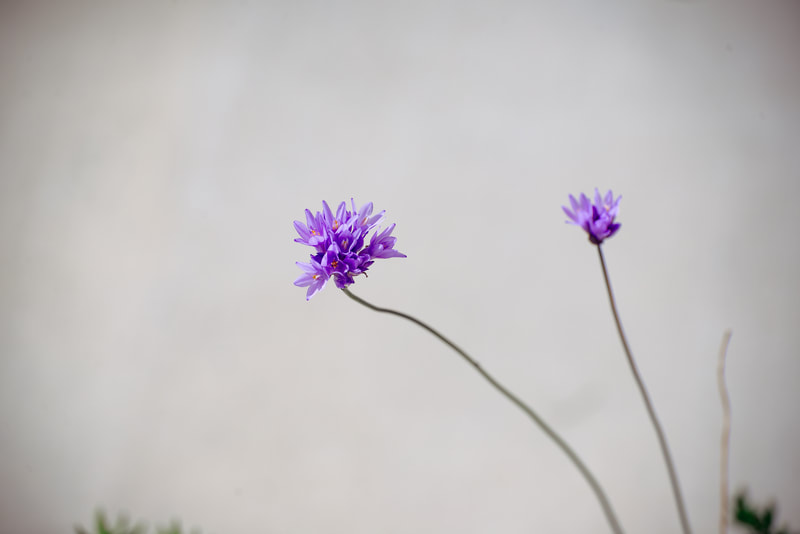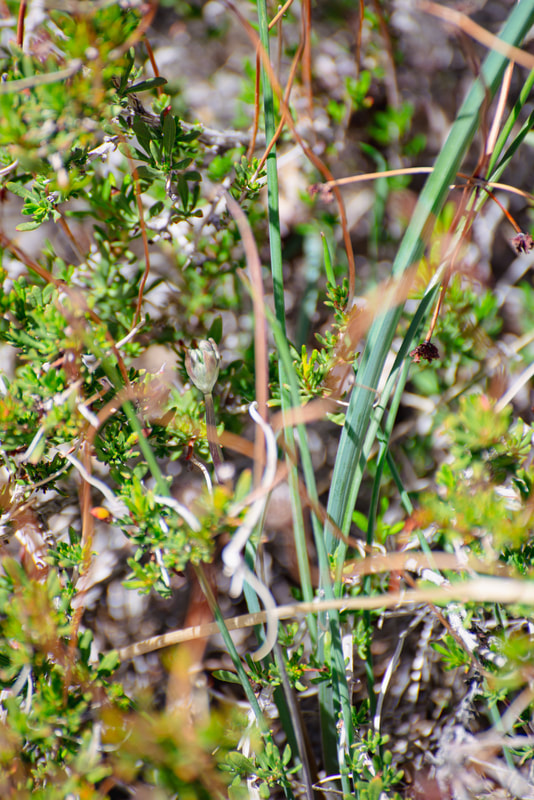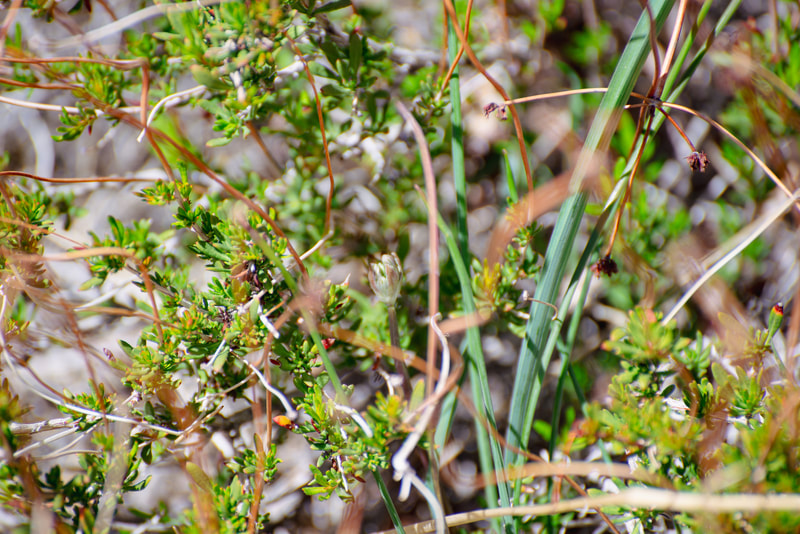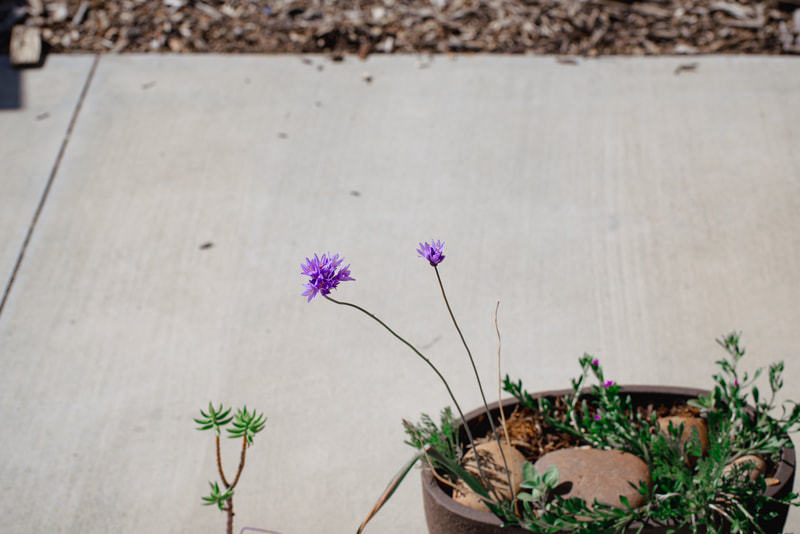Menu
Adelanto
|
Hello! And welcome to the garden of Adelanto!
Adelanto encompasses the ancestral lands of the Maara’yam, also known as the Serrano People. Maara’yam ancestral territory covers over 7.4 million acres of Southern California, including Adelanto! Here in our Adelanto Garden, we can see Creosote, Wild Hyacinth, Honey Mesquite, and Joshua Tree! These are all important plants to our local Indigenous Communities! Today, Tribal Communities collaborate with local agencies, such as the United States Forest Service, National Park Service, and others, to obtain permits to gather culturally significant plants and other natural materials. Adelanto is a place with a lot of possibilities. How do you think of Adelanto when you think of the natural world? There are so many important plants here. Can you imagine people thinking of Adelanto as a place where everyone cares about the environment and each other? I bet you can! How would that world be different from the world we have now? I bet, if you use your imagination, you can think of ways we can create a more caring world! We’re so glad you’re here! |
¡Hola! ¡Y bienvenidos al jardín de Adelanto!
Adelanto abarca las tierras ancestrales de los Maara’yam, también conocidos como el Pueblo Serrano. El territorio ancestral de los Maara’yam cubre más de 7.4 millones de acres en el sur de California, ¡incluyendo Adelanto! Aquí, en jardín de Adelanto, podemos ver creosota, jacinto silvestre, mezquite dulce y el árbol de Josué. ¡Estas son todas plantas importantes para nuestras comunidades indígenas locales! Hoy en día, las comunidades tribales colaboran con agencias locales, como el Servicio Forestal de los Estados Unidos, el Servicio de Parques Nacionales y otros, para obtener permisos para recolectar plantas culturalmente significativas y otros materiales naturales. Adelanto es un lugar con muchas posibilidades. ¿Cómo piensas en Adelanto cuando piensas en el mundo natural? Aquí hay tantas plantas importantes. ¿Puedes imaginar a la gente pensando en Adelanto como un lugar donde todos se preocupan por el medio ambiente y entre sí? ¡Apuesto a que sí! ¿Cómo sería ese mundo diferente del mundo que tenemos ahora? !Apuesto a que, si usas tu imaginación, puedes pensar en formas en las que podemos crear un mundo más solidario! ¡Estamos muy contentos de que estés aquí! |
Creosote Bush (Larrea tridentata) Yaac
|
Southern California Indigenous Communities and Creosote Bush, Serrano: Yaac
Creosote Bush is found in the deserts, plains, and dry slopes of Southern California. The Creosote Bush is great for many different reasons. It provides firewood, medicine, and soap! By grinding the plant down, the Ground Creosote Bush can also be used on wounds for healing and preventing infections, and it can even clean out poison. Liniments were used to help swelling and circulation on the body and horses can also eat the plant. What can’t Creosote do?! The Creosote Bush can also be used to make medical tea to help with sinus congestion. Today, folks use a towel over a steaming pot, to help trap the steam so they can breathe it in. Is there a medicine you have used like this? When you think of plants that give medicine, how do you think about them? Do you think of them as just material to use? Local historian, editor, educator, and artist, Pat Murland says, “according to Serrano elder Dorothy Ramon, plants “were made out of people’s bodies.” They were made at the time of indigenous creation when people “transformed themselves into plants” and “they called it medicine.” (1) American Indian nurses of Southern California believed that all plants were personified. They had life and spiritual power for the benefit of the people. Plants were a gift of creation. Native nurses believed that the power of the plant to cure stemmed from their spiritual origins, and they could be effective if asked to intervene in a person’s ill health. For this reason, Native nurses gave thanks to plants before picking and applying them. Nurses also sang to or prayed for patients when they administered herbal medicines. (2)” Does this make you think about plants differently? How do you interact with the plants around you? Does knowing this about Native Southern California First Peoples, change how you would like to see the plants and animals around you? |
Comunidades Indígenas del Sur de California y el Arbusto de la Gobernadora, Serrano: Yaac
El arbusto La Gobernadora se encuentra en los desiertos, llanuras y laderas secas del sur de California. El arbusto es excelente por muchas razones. ¡Proporciona leña, medicinas y jabón! El arbusto de creosota molido también se puede utilizar en heridas para curar y prevenir infecciones, e incluso puede limpiar el veneno. Los Ancianos Serranos también usaban los linimentos para ayudar a la hinchazón y la circulación en sus cuerpos y los caballos también pueden comer la planta. ¿Qué no puede hacer la creosota? El arbusto de gobernadora también puede usarse para hacer un té medicinal que ayuda con la congestión de los senos paranasales. Hoy en día, la gente usa una toalla sobre una olla humeante para ayudar a atrapar el vapor y poder inhalarlo. ¿Hay algún medicamento que hayas usado de esta manera? Cuando piensas en plantas que dan medicina, ¿cómo piensas sobre ellas? ¿Piensas en ellas como sólo material para usar? Pat Murland, historiadora, editora, educadora y artista local, dice: “Según la anciana Serrano Dorothy Ramon, las plantas “estaban hechas de cuerpos de personas”. Fueron hechas en la época de la creación indígena cuando la gente “se transformaba en plantas” y “lo llamaban medicina”. (1) Las enfermeras Nativo Americanas del Sur de California creían que todas las plantas estaban personificadas. Tenían vida y poder espiritual para beneficio del pueblo. Las plantas fueron un regalo de la creación. Las enfermeras nativas creían que el poder curativo de la planta provenía de sus orígenes espirituales y que podían ser eficaces si se les pedía que intervinieran en la mala salud de una persona. Por esta razón, las enfermeras nativas agradecían las plantas antes de recogerlas y usarlas. Las enfermeras también cantaban o rezaban por los pacientes cuando les administraban medicinas a base de hierbas. (2)” ¿Esto te hace pensar en las plantas de manera diferente? ¿Cómo interactúas con las plantas que te rodean? ¿Saber esto sobre los Primeros Pueblos Nativos del sur de California cambia la manera en que te gustaría ver plantas y animales que te rodean? |
1. Ramon and Elliott, Wayta’Yawa’: Always Believe, 387-388; Saubel and Elliott, ‘Isill Héqwas Wáxish: A Dried Coyote’s Tail 2, 1156.
2. Murland, Pat, Healing Spirit, Finding Balance in Ceremony and Medicines, Feb 03, 2021, https://dorothyramonlearningcenter.substack com/p/healing-spirit : "Wyandot-Huron elder Eleonore Sioui from Wendake, Quebec, once explained to the author that the plant has power through its creation but medicine women ask the Creator to put healing power into the plant through song and prayer to do the needed work necessary to heal a patient. Indigenous nurses and doctors of Southern California believed the same way and used song and prayer to enhance and ensure the healing power of plant medicine."
2. Murland, Pat, Healing Spirit, Finding Balance in Ceremony and Medicines, Feb 03, 2021, https://dorothyramonlearningcenter.substack com/p/healing-spirit : "Wyandot-Huron elder Eleonore Sioui from Wendake, Quebec, once explained to the author that the plant has power through its creation but medicine women ask the Creator to put healing power into the plant through song and prayer to do the needed work necessary to heal a patient. Indigenous nurses and doctors of Southern California believed the same way and used song and prayer to enhance and ensure the healing power of plant medicine."
Honey Mesquite (Prosopis grandulosa) O̱o̱č
|
Southern California Indigenous Communities and Honey Mesquite, Serrano: O̱o̱č
Honey Mesquite is an important plant for the Indigenous Communities of Southern California! For the Serrano People it was a food source and building material. Mesquite was used as yummy food! Almost as much as acorns! In June the mesquite flowers are edible and in July and August the seed pods are harvested. There is even evidence that the names of the seasons were connected to the cycles of the tree. (1) The flowers can be roasted, dried and eaten, or mixed with water to make a beverage. The seed pods can be eaten fresh, ground and mixed with water to produce a creamy beverage named “ményikish pishpakhatem”, or eaten dried or ground to be made into a kind of flour used to make a cake similar to a pancake. The cake can be stored and consumed as a drink, porridge, or as the cake itself. Mesquite harvests prove that Indigenous Communities were sophisticated gardeners, pruning and removing the undergrowth of the tree so that it would produce a lot of flowers and beans and they would be easy to harvest. Today, without people to maintain the wild trees, they become heavy with old branches and thorns and don’t produce as many beans. But if you want to try mesquite, great news! You can order mesquite flour online and from some health food stores and there are Native cookbooks that show you what to make! Click the buttons below to order some! |
Comunidades Indígenas del Sur de California y el Mezquite Dulce, Serrano: O̱o̱č
¡El Mezquite de Miel es una planta muy importante para las Comunidades Indigenas del sur de California! Para los pueblos Serrano fue fuente de alimento y material de construcción. ¡El mezquite se usaba como comida deliciosa! ¡Casi tanto como las bellotas! En junio las flores son comestibles y en julio y agosto se cosechan las vainas de las semillas. Incluso hay evidencia de que los nombres de las estaciones estaban relacionados con los ciclos del árbol. (1) Las flores se pueden tostar, secar y comer, o mezclar con agua para preparar una bebida. Las vainas de semillas se pueden comer frescas, molidas y mezcladas con agua para producir una bebida cremosa llamada “ményikish pishpakhatem”, o se pueden comer secas o molidas para convertirlas en una especie de harina que se utiliza para hacer un pastel similar a un panqueque. El pastel se puede conservar y consumir como bebida, papilla o simplemente como pastel. Las cosechas de mezquite demuestran que las Comunidades Indigenas eran jardineros sofisticados, que podaban y eliminaban la maleza del árbol para que produjera muchas flores y frijoles y fueran fáciles de cosechar. Hoy en día, sin gente que mantenga los árboles silvestres, estos se vuelven llenos de ramas viejas y espinas y no producen tantos frijoles. Pero si quieres probar el mezquite, ¡buenas noticias! Puedes pedir harina de mezquite en línea y en algunas tiendas nutricionales, ¡y hay libros de cocina locales que muestran qué hacer! ¡Haga clic en los botones a continuación para pedir algunos! |
- Murkland, Pat, Ancient Tree of Life, Mesquite's Superpowers for Health, Oct 20, 2021, https://dorothyramonlearningcenter.substack.com/p/ancient-tree-of-life
Joshua Tree (Yucca brevfolia)
|
Southern California Indigenous Communities and Joshua Tree
Joshua Trees are native to the Mojave Desert. The plant is a source for fiber-like materials to make everyday items. The blossoms of the plant were traded amongst Native Communities. Today, Joshua trees are protected under the Western Joshua Tree Conservation Act from 2023, due to their endangered status. This means Joshua Trees cannot be removed or harmed How did Joshua Trees become endangered? Scientists can see proof of climate change by studying Joshua Trees. Joshua Trees, like every other species in the Mojave Desert, are used to a certain amount of water and heat. Because of droughts, when fires happen, they burn hotter than what would be considered normal. Joshua Trees have evolved to survive fires, but not fires this hot or this often. Wildfires that burn bigger and hotter and more often, than ever before in history, are killing more Joshua Trees than the environment can naturally keep up with. It’s up to everyone to support Native Peoples and park workers who are replanting Joshua Trees and it’s up to all of us to save our homes from climate change. |
Comunidades Indígenas del Sur de California y el Árbol de Josué
Los árboles de Josué son nativos del Desierto de Mojave. La planta es una fuente de materiales similares a la fibra para hacer artículos de uso cotidiano. Las flores de la planta se intercambiaban entre las Comunidades Nativas. Hoy en día, debido a su estatus como planta en peligro, los árboles de Josué están protegidos bajo el Acto de Conservación del Árbol Josué Occidental del 2023 (Western Joshua Tree Conservation Act). Esto significa que estos árboles no pueden ser removidos o lastimados. ¿Cómo es que los árboles de Josué llegaron a estar en peligro de extinción? Los científicos pueden ver pruebas del cambio climático estudiando los árboles de Josué. Los árboles de Josué, como cualquier otra especie del desierto de Mojave, están acostumbrados a una cierta cantidad de agua y calor. Debido a las sequías, cuando se producen incendios, arden a temperaturas más altas de lo normal. Los árboles de Josué han evolucionado para sobrevivir a los incendios, pero no a los incendios tan intensos ni tan frecuentes. Los incendios forestales arden con mayor intensidad, intensidad y frecuencia como nunca antes visto, y están matando más árboles de Josué de los que el medio ambiente puede soportar de forma natural. Depende de todos apoyar a los Pueblos Nativos y a los trabajadores de parques que están replantando árboles de Josué y es el deber de todos salvar nuestros hogares del cambio climático. |
Wild Hyacinth (Blue Dicks) (Dipterostemon capitatus)
|
Southern California Indigenous Communities and Wild Hyacinth
Wild Hyacinths are a blue-purple flower at the end of a long cool green stem that grows in the lower and upper Sonoran zones of the desert. The bulbs under the ground are called corms. The corms hold a lot of nutrients, so the Indigenous Communities eat them raw or cooked. The blue flowers and corms can even be used as shampoo and soap! Like many native California plants, Wild Hyacinth can benefit from fire. Fires burn other vegetation, allowing the hyacinth bulb more favorable conditions for growing and blooming. Fire is so important to the native California landscape that there is even a beetle called the “Fire Chaser Beetle”, that depends on fire for reproduction! They lay their eggs in freshly burned trees because there are fewer predators. Climate change causes drier conditions in Southern California. Fires happen less frequently and burn hotter, which sometimes causes the earth to become hard and slick in areas where fires have been really really hot. Not only does this make it harder for plants like Wild Hyacinth to break out of the ground, but new leaves and debris fall on this slick surface, causing landslides when rain comes. Funny, huh? Fire is good for Native California environments, but hot weather is very bad! California is such a strange and amazing place! |
Comunidades Indígenas del Sur de California y el Jacinto Silvestre
Los jacintos silvestres son una flor azul violeta al final de un largo tallo verde fresco que crece en las zonas bajas y altas del desierto de Sonora. Los bulbos que se encuentran bajo tierra se llaman cormos. Los cormos contienen muchos nutrientes, por lo que las Comunidades Indigenas los comen crudos o cocinados. ¡Las flores y los cormos azules incluso se usaban como champú y jabón! Como muchas plantas nativas de California, el jacinto silvestre puede beneficiarse del fuego. Los incendios queman otra vegetación, lo que permite que el bulbo del jacinto tenga condiciones más favorables para crecer y florecer. El fuego es tan importante para el paisaje nativo de California que incluso hay un escarabajo llamado "Escarabajo cazador de incendios", ¡que depende del fuego para reproducirse! Ponen sus huevos en árboles recién quemados porque hay menos depredadores. El cambio climático provoca condiciones más secas en el sur de California. Los incendios ocurren con menos frecuencia y arden con mayor temperatura, lo que a veces hace que la tierra se vuelva dura y resbaladiza en áreas donde los incendios han sido muy calurosos. Esto no sólo dificulta que plantas como el jacinto silvestre salgan del suelo, sino que nuevas hojas y escombros caen sobre esta superficie resbaladiza, provocando deslizamientos de tierra cuando llega la lluvia. Gracioso, ¿eh? El fuego es bueno para los ambientes nativos de California, ¡pero el clima cálido es muy malo! ¡California es un lugar tan extraño y sorprendente! |
Site powered by Weebly. Managed by iPage
